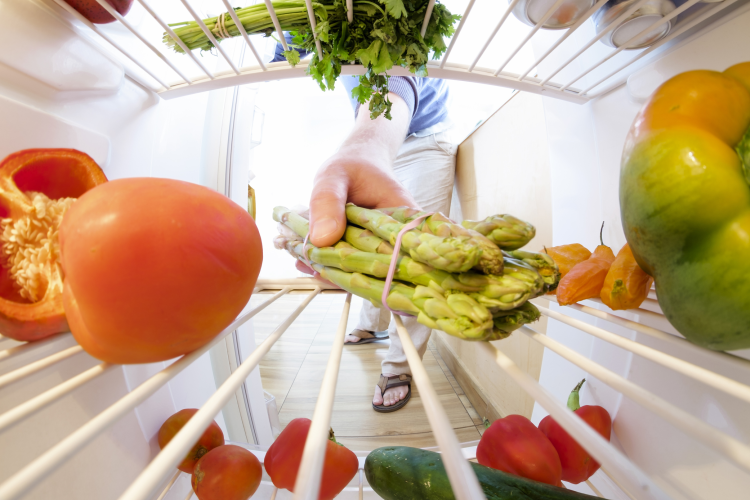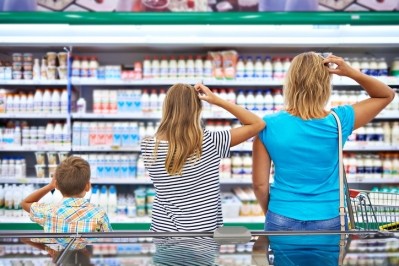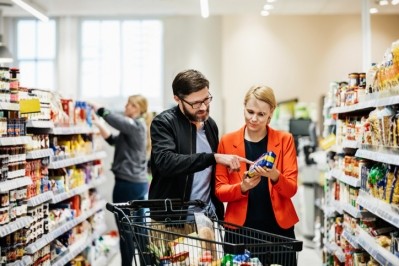Danone discusses food waste in the home: ‘Changing consumer behaviour can be challenging and takes time’

In Europe, 88m tonnes of food is wasted each year. An oft cited fact is that if food waste were a country it would be the third largest emitter behind only the USA and China.
“When food is wasted, the energy and water it takes to grow, harvest, transport, and package it is also wasted. And when food ends up going to landfill and rots, it produces harmful greenhouse gas,” Danone UK & Ireland sustainability manager Amy McDonnell reflected.
“Despite all of this waste, there are still 135m people facing acute hunger,” she stressed, noting that food waste is equivalent to 1.3bn meals. “Addressing this issue is crucial because reducing food waste will bring numerous benefits such as: increased food availability to the most vulnerable, a reduction in GHG emissions, reduced pressure on land and water resources, and an increase in productivity and economic growth.”
Consumers are united around the idea that they want the food industry to address this moral and environmental disgrace. As the recent Food for You 2 survey from the FSA demonstrates, food waste is reported as a top concern by 63% of UK consumers, coming in above sugar content (59%) and animal welfare (56%).
“Consumers are more aware than ever of the potential impacts of food waste and the sustainability credentials of the food and drink they purchase,” McDonnell observed.
But while awareness of food waste is high, what might be less common knowledge is that the majority of food waste occurs in the home.
Data from the European Parliament shows retail, primary production, foodservice, and processing account for 5%, 11%, 12% and 19% of food waste respectively. Households account for the remainder, a staggering 53% of waste.

‘Changing consumer behaviour can be challenging’
Consumers want food makers, distributors and retailers to take action on food waste. A 2021 report from Hearts & Science found 62% of consumers take a brand's eco-credentials into consideration when purchasing food and drink products.
But is it particularly difficult for the industry to address food waste in the home because it requires people to change how they shop, plan and prepare food?
“For all of us, changing consumer behaviour can be challenging and takes time,” McDonnell noted.
However, she does see signs of a positive shift on the horizon: “With global food prices rising, this could lead to more considered food management behaviours in the home,” she predicted.
Moreover, the sustainability expert stressed, ‘it is not just consumers who need to change’.
“Businesses and retailers also need to play a part. This is why Danone is working to reduce food waste in our own operations by 50% by 2030. Consumer change is motivated by cultural, social, personal, and psychological factors, so we can’t expect this shift to happen overnight.
“As Danone is one of the largest B Corps in the UK and Ireland, leading with purpose means empowering millions of consumers to make healthier and more sustainable food and drink choices. Businesses like ours have an important role to play in supporting better nutrition and environmental responsibility, and we know that encouraging healthy habits that also consider the environment must be at the heart of our decision making.”

Danone UK & Ireland therefore aims to make the products it offers healthier and more sustainable across the board, McDonnell told FoodNavigator, from supporting plant-based options to working with retailers to encourage consumers to make healthy choices.
As well as reducing waste in the supply chain, brands can help ‘provide clear information to consumers to reduce waste in the home’, the social innovation expert suggested.
For example, Danone supports fellow B Corp, Too Good To Go’s ‘Look, Smell, Taste Don’t Waste’ campaign. “By changing from use by dates to best before dates on our yogurts, adding the ‘Look, Smell, Taste, Don’t Waste’ logo to packs, and educating consumers through ongoing communications, we are encouraging people to have the confidence to use their judgment about whether food beyond its best before date is still good to eat.”
McDonnell observed that this is part of a broader industry shift, with a ‘range of other food businesses and brands’ taking similar steps on Best Before labelling. “We’ve also seen retailers taking action, with Waitrose, M&S and Co-Op making changes to their date labelling in recent months. But we need many more organisations to join the movement, making a simple but significant change that can have a huge positive impact.”
The role of date labels
Date labels serve an important purpose. They communicate the timeframe that products are at their best quality, protecting consumers from spoilage and contributing to food safety.
However, data from Too Good To Go suggests many shoppers find date labels confusing – and this lack of clarity contributes to 10% of Europe’s food waste, or around 9,000,000 tonnes across Europe each year. Eurobarometer data suggests 53% of consumers don't know the meaning of 'best before' labelling, while 60% of consumers don't understand what 'use by' labelling means. Nevertheless, six out of ten European shoppers say they always check 'use by' and 'best before' dates before they purchase food and beverages.
“While ‘Use By’ dates tell us when a food is no longer safe to eat, foods past their ‘Best Before’ date can often still be enjoyed. Like other food brands, Danone decided to switch from ‘Use By’ to ‘Best Before’ dates across our Activia, Actimel, Light & Free and Oykos yogurts in the UK, to help avoid uncertainty and tackle food waste in the home,” McDonnel observed.
“If more brands were able to explore making this switch and supporting consumers in understanding what different date labels mean, it could make a big impact in reducing food waste at home.”
But, given the important role that date labelling plays in food quality and safety, could any unintended negative consequences result from this change?
McDonnell responded: “Brands must take full responsibility when making changes to date labels on their products, and ensure that it is safe to do so. Before changing date labels across our yoghurt brands, we carried out robust and extensive analyses to ensure our products will still be safe to consume beyond their best before dates.”



















